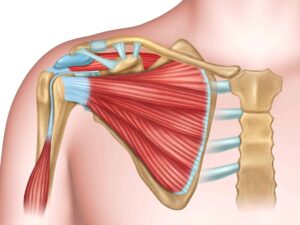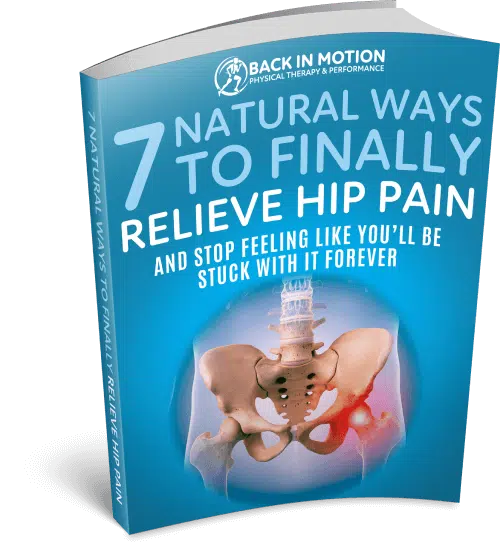Understanding the Rotator Cuff: The Unsung Hero of Your Shoulder
The human shoulder is a marvel of biomechanical engineering, providing us with an impressive range of motion to perform everyday activities, from reaching high shelves to engaging in sports. However, this incredible mobility is accompanied by a downside—the shoulder is highly vulnerable to injury. At the heart of this intricate joint lies the rotator cuff, a cluster of muscles and tendons that play a critical role in maintaining the stability and functionality of the shoulder joint. In this comprehensive guide, we will delve into the nature of the rotator cuff, its anatomical structure, functions, prevalent injuries, and methods to maintain its health.
Anatomy of the Rotator Cuff
To comprehend the rotator cuff, it’s crucial to first grasp its anatomy. The rotator cuff isn’t a solitary muscle but rather a consortium of four muscles accompanied by their associated tendons. These components connect the upper arm bone (humerus) to the shoulder blade (scapula). The four pivotal muscles within the rotator cuff are:
-
Supraspinatus: Located atop the shoulder blade, this muscle initiates arm abduction, allowing the arm to lift away from the body.
-
Infraspinatus: Situated on the rear of the scapula, the infraspinatus muscle plays a crucial role in external arm rotation.
-
Teres Minor: Positioned beneath the infraspinatus, the teres minor also contributes to external rotation.
-
Subscapularis: Found on the front of the shoulder blade, the subscapularis muscle facilitates internal arm rotation.
Together, these four muscles create a “cuff” that envelops the humerus’s head, keeping it firmly within the shallow scapular socket. This arrangement imparts stability and enables a wide range of shoulder movements.
Functions of the Rotator Cuff
The rotator cuff serves several primary functions, including:
-
Stability: One of its chief roles is to stabilize the shoulder joint, preventing excessive movement and averting dislocation of the humerus from the scapula.
-
Range of Motion: While ensuring joint stability, the rotator cuff muscles simultaneously facilitate various shoulder movements, including lifting, rotating, and reaching.
-
Dynamic Control: These muscles dynamically control arm positioning during daily activities and sports, ensuring continued shoulder functionality and injury avoidance.
-
Force Generation: Despite their relatively small size, the rotator cuff muscles contribute significantly to generating force within the shoulder, crucial for actions such as throwing and lifting.
Common Rotator Cuff Injuries
Despite its pivotal role, the rotator cuff is susceptible to injuries, especially with repetitive use and aging. Several common rotator cuff injuries include:
-
Tendinitis: Rotator cuff tendinitis involves the inflammation of tendons, frequently stemming from overuse or repetitive movements, resulting in pain, particularly during lifting or reaching.
-
Rotator Cuff Tears: These tears may be partial or complete, affecting the rotator cuff tendons. Trauma, degeneration, or chronic tendinitis can be causative factors.
-
Impingement Syndrome: Occurring when the rotator cuff tendons become pinched between the acromion (a scapular component) and the humeral head, this syndrome leads to pain and limited mobility.
-
Bursitis: Inflammation of the bursa sac, which cushions the rotator cuff tendons, can induce shoulder pain and discomfort.
-
Frozen Shoulder (Adhesive Capsulitis): Though not a direct rotator cuff injury, frozen shoulder may restrict shoulder joint mobility, affecting the rotator cuff’s function.
Diagnosis and Treatment
In the presence of persistent shoulder pain, a professional medical consultation is imperative for an accurate diagnosis. Diagnosis typically comprises a physical examination, imaging tests (such as X-rays or MRI scans), and an evaluation of medical history and symptoms.
Treatment approaches for rotator cuff injuries are contingent on the injury’s severity and may encompass:
-
Rest and Immobilization: Allowing the shoulder to rest and refraining from activities that exacerbate pain can foster healing. Immobilization, often with the use of a sling, may be recommended.
-
Physical Therapy: Physical therapists can prescribe tailored exercises and stretches to bolster the rotator cuff muscles and enhance range of motion.
-
Medications: Non-steroidal anti-inflammatory drugs (NSAIDs) may be employed to alleviate pain and inflammation.
-
Corticosteroid Injections: In some instances, corticosteroid injections directly into the shoulder joint can mitigate pain and inflammation.
-
Surgery: For severe rotator cuff tears or situations in which conservative treatments prove ineffective, surgical repair may be warranted. Surgical interventions aim to reattach and strengthen the damaged tendons.

Concluding Remarks on the Rotator Cuff
In conclusion, appreciating the pivotal role of the rotator cuff in maintaining shoulder health is paramount. If you or a loved one experiences shoulder pain or suspects a rotator cuff injury, prompt professional consultation is advisable. Our team of dedicated shoulder pain treatment specialists is poised to offer expert guidance and individualized care.
Shoulder pain need not impede daily life or hinder the enjoyment of favorite activities. We extend a warm invitation for you to embark on the path to recovery and well-being. Schedule an appointment at our physical therapy clinic, and together, we can work toward complete mobility and a life free from shoulder pain. The journey to a healthier shoulder commences with a simple appointment. Reach out to us today and let us collaborate to restore you to a life free from shoulder pain in Fort Myers.








